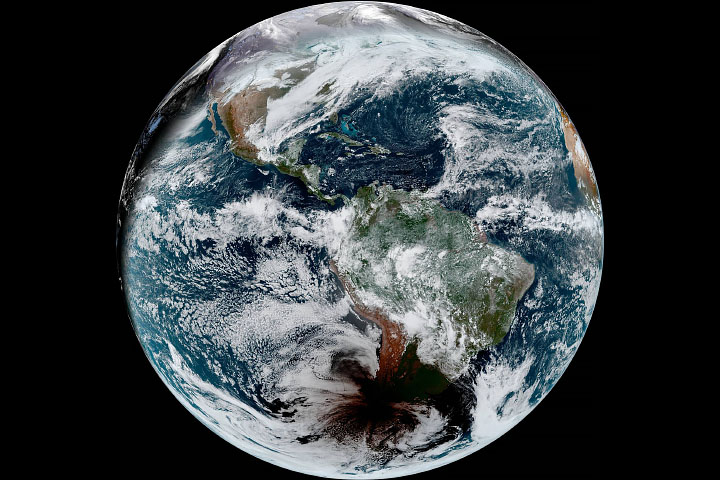Total solar eclipse 2020: a view from above

Total solar eclipse 2020: a view from above Today’s Image of the Day from NASA Earth Observatory features the shadow of the Moon crossing the face of Earth during the total solar eclipse on December 14, 2020.
According to NASA, the Moon completely blocked the disk of the Sun for about two minutes, and the much dimmer solar corona and its streamers became visible to the naked eye.
Total solar eclipse 2020: a view from above The “path of totality” was approximately 60 miles wide and passed across South America through Chile and Argentina. However, thick cloud cover from an atmospheric river event made it difficult for many people to view the eclipse. A solar eclipse occurs when a portion of the Earth is engulfed in a shadow cast by the Moon which fully or partially blocks sunlight. This occurs when the Sun, Moon and Earth are aligned. Such alignment coincides with a new moon indicating the Moon is closest to the ecliptic plane. In a total eclipse, the disk of the Sun is fully obscured by the Moon. In partial and annular eclipses, only part of the Sun is obscured.
The image was captured by the Advanced Baseline Imager (ABI) on Geostationary Operational Environmental Satellite 16 (GOES-16).
Image Credit: NASA Earth Observatory
—
By Chrissy Sexton, Earth.com Staff Writer























